My Top 10 Games of 2018
My Top 10 Games of 2018. Two robots, an L-block, a boy who can transform into monsters and a dismembered head rolls into a bar…
 UnexpectedGames
UnexpectedGames
Just a friendly bear who works in financial reporting that would rather be playing, writing or talking about video games. https://twitch.tv/unexpectedenemy
My Top 10 Games of 2018. Two robots, an L-block, a boy who can transform into monsters and a dismembered head rolls into a bar…
(Disclaimer: My top 10 games for 2018 could have been different if I managed to complete certain titles prior to the new year. I always do my best to only include the games I managed to complete by year’s end, however. If you would like to read my honorable mentions, they can be found here. You can also read about the games that could have made my list here! So, without further ado…)
2018 was a better year than the last. Like many, I’ve had some personal/career-related growth and the usual ups & downs that life brings with it. For the past few years, however, I have been partaking in an online challenge where one must complete 52 games in a year. For those who have a broad taste in genres and a crippling backlog to boot (like myself), it gives those with such circumstances an opportunity to not only set a goal for themselves, but also a chance for like-minded individuals to share opinions, discuss thoughts and do what we do best; play video games (and subsequently write about them to our heart’s content). I met the challenge this year and completed 62 games consisting of both old and new releases (some replays of old favorites included).

The conditions for this challenge are rather loose and one can decide when a game is “finished” on their own terms. I typically considered a game “completed” when I see the credits roll, but there are some exceptions to this rule. I also do my best to track (in excel) and take the games I started from the prior year (yet finished in the current year) into consideration. At the end of the day, it’s just a bunch of mental gymnastics, but it’s partially what keeps me moving and there’s an entire community surrounding the goal, which is cool. So, from the 62 games I completed this year, here are the 10 games from 2018 that resonated with me the most!
10 – Part Time UFO – “Well, Sinead O’Rebellion. Shock me, shock me, shock me with that deviant behavior!” Yes, as someone who’s disliked mobile gaming for many years (I’ve had my reasons; touch-screen controls, pay-to-play monetization schemes, cluttered marketplaces with copycat clones, etc.), I’ve finally found one where I feel strongly enough about to include on an arbitrary list of top 10 games! HAL Laboratory, Inc. (known for Kirby and BoxBoy) have released their first game, Part Time UFO, under their mobile division (HAL Egg). Part Time UFO is a full-featured, one-time purchase mobile game for iOS/Android devices. The concept is simple; a UFO lands on Earth and helps people complete mundane jobs/tasks (such as fishing, moving cargo and gathering ingredients for a recipe) in order to earn cash and make a living. Part Time UFO is essentially a crane-game, yet instead of capturing prizes with a claw, the UFO assists citizens with their menial tasks in various physics-based scenarios.

Mechanically, for those old enough to remember arcades, the game functions similarly to a real crane-game and the two touch-screen control schemes are highly intuitive. Each stage contains optional medals to earn based on particular criteria which increases the replay value, too. Money earned from the various jobs can also be used to unlock new hats for the UFO which grants the little alien passive abilities. It’s a fun, super polished, mechanically-sound mobile game that offers a lot for the small asking price. I’ve since dabbled and enjoyed my time with games like Dragalia Lost, Pokémon Go, Animal Crossing: Pocket Camp, Super Mario Run (and I’ve yet to play Florence), but none have left me quite as stricken with pure mobile joy as Part Time UFO. Support good mobile games!
Favorite Part Time UFO Moment: Realizing I purchased a mobile game that does not have predatory monetization efforts.
9 – God of War – Boy… what a game! While Sony Santa Monica Studio has already received enough praise from both critics and fans alike, God of War truly is a remarkable evolution to a series that has been rooted in familiarity and fatigue for far too long. The new God of War is what Resident Evil 4 was to the original Resident Evil game. Gone are the fixed-camera angle perspectives (a la Devil May Cry circa PlayStation 2 era) and say hello to the over-the-shoulder, 3rd-person action-game! Director Corey Barlog adopted a single-shot camera approach (think Birdman or that one episode from It’s Always Sunny in Philadelphia) and it’s quite novel and effective here. The narrative is also much stronger and more mature than the previous entries to date. The score, composed by Bear McCreary, is appropriately epic and the game is quite large in scope, too. The combat has been completely refined and the new primary weapon, a one-handed axe, can be tossed and retrieved, much like Thor’s hammer from the Marvel Comic Universe.

The game just feels good to play. The moment to moment combat is visceral and most importantly, the feedback from hitting enemies is superb. The Lake of Nine, which serves as the game’s hub-world, is an interconnected, Metroid-like space with cleverly placed shortcuts and cohesively designed areas begging to be explored. Side-quests are also integrated into the dialogue and conversations stop & start depending on contextual situations. Little touches go a long way, especially for a game that’s already as polished as this. With that said, God of War is not without its shortcomings. I’ve completed the game on Give Me God of War difficulty and I couldn’t help but notice the similarities to other modern, “AAA” action-game titles (such as The Last of Us, the new Tomb Raider games and even the aforementioned Resident Evil 4). While there’s nothing wrong with borrowing ideas from these titles, I feel like God of War, at times, carries an identity established by those who have walked before it. Despite being a character-driven action-game, God of War is also much more of an RPG this time around and I’m not quite sure if it’s a better game for it.

God of War has equipment, level-ups, stats, skills, elemental weakness and the like, however, there’s far too much of it. Often I found myself utilizing tried & true battle techniques and particular gear during most, if not all of the encounters, even on the highest difficulty setting! The enemy variety is decent and the game does an okay job at mixing encounters with a concoction of enemy types, but there’s just way too many options available to the player and there’s little incentive to use one skill/technique over the other. Having combat choices and a range of abilities at your disposal is great, but it’s even better when a game calls for experimentation and utilization of such offerings and I don’t feel like God of War particularly hit those notes successfully. God of War is still a wonderful game and a journey that’s more than the sum of its parts. I’m looking forward to seeing what’s next for Kratos… and the boy!
Favorite God of War Moment: Meeting the serpent of the lake for the first time.
8 – Mega Man 11 – Both Capcom and the blue bomber have had their rough patches over the past few years. In 2008, what some would argue was the beginning of a retro revolution, we saw Capcom return to the 8-bit era with the release of Mega Man 9. Two years later, we saw Mega Man 10 which tread similar grounds, but perhaps for many (including myself), it was just too soon for more of the same. Mega Man may have had its appearance or two in cross-over games since, but I couldn’t tell you where or why he appeared in one game over the other. Finally, there was the promise and ultimate demise of what could have been Mega Man Legends 3. Needless to say, fans were fed-up and Capcom’s blue mascot turned-in his helmet for good… until now.
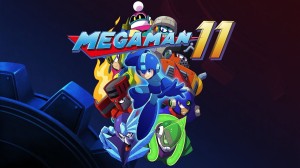
A few years before the announcement of Mega Man 11, Keiji Inafune, a character designer/illustrator for Capcom during the NES/SNES era of Mega Man games, launched what was supposed to be the spiritual successor to Mega Man in the way of Mighty No. 9. Despite the disastrous Kickstarter campaign, the game just wasn’t very good nor was it the Mega Man game people were asking for. To be honest, there were some novel ideas in Mighty No. 9 (its emphasis on shooting, stunning and dashing through enemies would later be realized and corrected in Mighty Gunvolt Burst), but most of the game was poorly executed. Mega Man 11, however, is a pure distillation of all things Mega Man and that’s reason enough to celebrate its existence.

To some extent, Mega Man 11 is what Mighty No. 9 should have been. Everyone and everything you love about the franchise is back, including Roll, Rush, the two doctors (Light and Wily), 8 Robot Masters, tight/responsive controls and excellent 2D level-design with strong themes and bright colors. In addition to the tried & true formula on display here, there’s a new “Double Gear” system which allows Mega Man to either deal more damage or slow-down time. Having the two gears on a cool-down system allows it to be an interesting risk/reward mechanic that lends itself to the challenging (yet fair) stage-design. Aside from being personally disappointed by its soundtrack (I think the music is unmemorable), the positives surely outweigh any ill-will I may have towards the game. So, Capcom, where’s that Mega Man X9?
Favorite Mega Man 11 Moment: Seeing the line connect to each dot on the Wily Castle map. Pure nostalgia.
7 – Moss – Moss was the first full-length PlayStation VR (PSVR) game I had the opportunity to play from start to finish. It was easily one of the most memorable gaming experiences I’ve had all year, too. While Moss is a relatively short and simple action-adventure game, its screen-by-screen layout, fixed camera angles and unique player perspective makes it feel like you’re poking around and investigating miniature diorama-pieces. The simple fairytale-like setting/narrative is charming and the little mouse’s (Quill’s) animations, including her usage of ASL (American sign-language) are beyond adorable. It’s not quite like anything I’ve ever seen and alongside Astro Bot: Rescue Mission, it’s a must-play for anyone who owns the hardware.
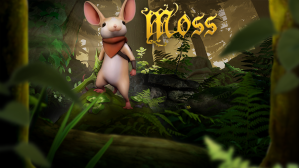
Favorite Moss Moment: Looking down at the water to see the reflection of the player’s perspective in VR. Mind. Blown.
6 – Celeste – Developed by Matt Makes Games, Celeste looks like any other retro-inspired, sprite-based 2D platformer on the surface, but it’s actually much, much more than that. At its heart, Celeste is a hardcore precision-based platformer. Like many games of its ilk, the player can run, jump and dash their way through the environment. The fundamental difference here, however, is that Celeste’s omni-directional dash is limited to a single use and it can only be recharged by landing on a horizontal surface. At first-glance, some may be reminded of Super Meat Boy, but the overall structure is very different and the narrative much stronger. Celeste is about one girl’s personal struggle with their own anxiety and depression. The mountain that Celeste climbs is more a less a metaphor for life’s hardships and the difficulties that come with living inside one’s own head.
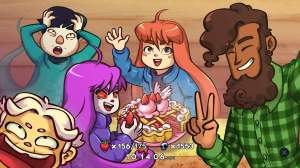
It’s a beautifully crafted story that feels genuine and heart-felt, to say the least. Besides its strong narrative, Celeste provides challenging, yet well-crafted stages that lends itself to the age-old “…just one more try…” design philosophy. The soundtrack, composed by Lena Raine, is also extremely textured, layered and wonderfully integrated into each stage. As Celeste climbs higher, the tempo increases and the music escalates in tandem with both the difficulty and her (the player’s) anxiety. It’s beautifully exhausting in the best way possible. I completed the game and nearly collected all of the Strawberries, too. There’s a ton of additional content, however, some of which is even more difficult than the main game. If I had to recommend just ONE indie platformer to play this year, look no further than Celeste.
Favorite Celeste Moment: Any of the final few chase sequences.
5 – Tetris Effect – Tetris was (and still is) a global phenomenon. It’s one of the few games a 20-to-30 something’s parents may know of, too. It’s a timeless classic that’s also seen numerous re-releases, remakes and revisions over the years on nearly every platform imaginable. My first exposure to Tetris was back on the original Game Boy as a kid. I can recall playing the game from time to time, but nothing ever beyond a quick session or two. I like puzzle games, but they’ve never been my go-to game. Fast forward to 2018 and Tetsuya Mizuguchi, the visionary behind such games as Rez, Lumines and Child of Eden, has brought us the next evolution to the “tetrominos” of the world.

Tetris Effect is one of the greatest audio/visual experiences I’ve had all year, particularly due to its VR implementation. Dropping blocks, clearing lines, and chaining combos is made all the more interesting/engaging due to the amazing soundtrack and cool visual effects. When a block is rotated, for example, different sound effects will play, which essentially makes every session a unique arrangement of the track/stage you are playing. In addition to simply just being an amazing rendition of Tetris, there’s even extra modes and unlockables to earn, including a weekly event that tallies the high-scores from players all around the world. Tetris Effect is the type of game I can see myself coming back to for years to come. Tetris is cool again y’all.
Favorite Tetris Effect Moment: Playing the Dolphin Surf stage for the first time. It’s audio/visual bliss.
4 – Monster Hunter: World – The latest installment in Capcom’s long-running beast-bashing franchise released earlier this year worldwide to much fanfare and praise. While Monster Hunter has always been a popular and well respected franchise in the east, the series never could reach its full commercial potential outside of Japan. Capcom’s focus on releasing major installments on portables hasn’t helped the series in the west, either. Although both the PlayStation Portable (PSP) and Nintendo 3DS have been appropriate hardware choices for the game’s quest-like structure, Monster Hunter has always been a relatively hardcore experience that demands a lot from its players. Fortunately, with Monster Hunter: World, Capcom has released perhaps the most user-friendly, on-boarding installment to date and its sales and positive reception speaks for itself.

Although I’ve put 130+ hours into Monster Hunter: World, its ongoing events and post-game grinds have had me consistently coming back for more. The Autumn and Winter Festivals arrived late September and November, respectively, and with it came a slew of new quests, layered armor and gear. Much like the previous festivals, none of the new quests were particularly difficult. All previous special quests returned as well, which gave returning players an opportunity to earn anything unique they may have missed from prior events. I had most of what I wanted from the Summer Festival, however, so my time spent among the fall leaves, jack-o-lanterns and snowmen was short-lived.

The end-game grind for decorations and tempered beasts is in-sight, but I’m not sure how many more of the same monsters I’m willing to hunt. Fortunately, Capcom has announced a true expansion, Iceborne, (similar to their G-rank updates in the past) which is set to release in Autumn of 2019. It looks like Monster Hunter: World will be in my rotation for the new year and then-some! With the success of last year’s Resident Evil 7, this year’s Monster Hunter: World and Mega Man 11, Capcom is reminding me why I fell in love with their games to begin with. They used to be the king of many corners and although they’ve had their peaks and valleys over the years, with both the Resident Evil 2 remake and Devil May Cry 5 shipping early next year, the future is finally looking bright again and I couldn’t be more excited.
Favorite Monster Hunter: World Moment: Seeing a turf-war between a Rathalos and an Anjanath.
3 – Monster Boy and the Cursed Kingdom – Wonder Boy, Monster World, Adventure Island, this series has gone by many names. It’s all rather confusing (which you can read about here), but all you need to know is this; in a year where dozens of “Metroidvania” games and 2D indie platformers alike were released, Monster Boy and the Cursed Kingdom is not only one of the best of its ilk, but it’s also simply one of the best games of the year. Developed by Game Atelier (a small team based in France) and with cooperation/oversight from the original creator, Ryuichi Nishizawa, Monster Boy is pure delight wrapped in a beautifully crafted package. With an all-star composer ensemble consisting of Yuzo Koshiro, Motoi Sakuraba and Michiru Yamane (among others), Monster Boy is as enjoyable to listen to as it is to play. I completed Monster Boy on New Year’s Eve and I have many more (wonderful) things to say about the game, but I’ll share those thoughts at a later date.

Favorite Monster Boy Moment: Watching the animated introduction sequence every time I turn the game on.
2 – The Missing: J.J. Macfield and the Island of Memories – In 2015, Hidetaka Suehiro (otherwise known as Swery to his fans) took a leave of absence from the gaming industry for personal medical reasons. Prior to his illness, Swery worked at Access Games, a development studio responsible for such cult-classics as Deadly Premonition and D4: Dark Dreams Don’t Die. After his time at Access Games and some much needed rest and introspection, Swery returned to the independent game scene and launched his new studio, White Owls Inc. Shortly after his new company was formed, White Owls announced their first big project, The Good Life, a “debt repayment daily life RPG co-developed by SWERY’s White Owls Inc. and a development team led by Yukio Futatsugi, the creator of Panzer Dragoon and Phantom Dust”, according to their Kickstarter page.

At some point before or after the funding of this project, however, Swery was quietly working on another game with Arc System Works. The Missing: J.J. Macfield and the Island of Memories is a 2D puzzle-platformer in the same vein of Playdead’s Limbo/INSIDE. What differentiates this game from a lot of its peers, however, is how the game incorporates its narrative and themes directly into the core gameplay mechanics. In the Missing, the player controls a college student who goes on a camping trip with a close friend. The extent of their relationship isn’t clear from the beginning, but as the player progresses, it becomes quite apparent how close they truly are. After a horrific turn of events on the first night of their trip, the main character, J.J., finds herself in a nightmare. Her friend has vanished and a murderous creature is on the hunt and it’s your job to find her.

To proceed, however, the player must harm themselves by mutilating their body in order to solve environmental puzzles. At first-glance, it may seem unnecessarily gruesome, but there’s a much deeper, more personal reason as to why the main character is doing this to herself. As some may not know, the Missing carries a strong message for the LGBTQ community and it is extremely poignant in the way it portrays its characters and themes. As a gay man who came out to their immediate family almost three years ago now, the Missing hit close to home, specifically considering how the game handled the communication between J.J. and the people closest to her. At certain points in the game (and if you collect enough donuts), J.J. will receive text messages from her family and friends. These texts are honestly some of the best moments in the game as they perfectly capture the nuances from the day-to-day conversations between loved ones (they’re also wonderfully written, so props to the localization team).
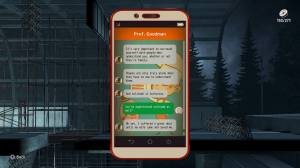
The Missing is the kind of game I wish everyone would play. It’s the type of game I want to scream at the top of a mountain, “…but have you played the Missing yet!?”. At the same time, I can understand why (a) the game will fly under most people’s radar and (b) it may not be for everyone. Even with Swery’s notoriety, the Missing is a hard sell. Some of the game’s best dialogue is locked behind hidden collectables, many of which may go unseen by the non-devotees. While each area/puzzle never overstays its welcome, some of the solutions also require J.J. to literally crawl at a limbless-pace, which can be relatively frustrating to control. At the end of the day, none of these issues detracted from my overall experience, however. The Missing is a heartfelt, purposeful journey about self-acceptance and perseverance. Support this game and discover what you’ve been missing!
Favorite The Missing Moment: The final chase sequence, boss battle and ending scenes. A triple gut-punch of all the feels.
1 – Astro Bot: Rescue Mission – Japan Studio is a Japanese 1st-party development studio known for some of PlayStation’s most creative and iconic franchises to date. Games like Ape Escape, Patapon, LocoRoco, Gravity Rush and even Knack have provided unique experiences not found on any other platform. When the original Ape Escape launched for the PlayStation back in 1999, it required Sony’s DualShock controller in order to play. For those who may not remember a time before analog controls, the DualShock allowed developers more freedom in both character control and camera movement applications. Ape Escape was one of the few games to take full advantage of the controller’s capabilities, too. Players could make over/underhanded swings with their net to capture monkeys, twirl a hula-hoop by rotating the right analog stick to stun enemies and even control an R.C. Car to solve puzzles by utilizing both analog sticks. It was kind of a big deal.
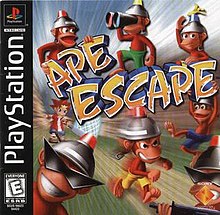
This wasn’t the last time Sony and Japan Studio would experiment with their hardware of choice. The PlayStation Eye and Move were utilized in The Eye of Judgment and Kung Fu Rider for the PlayStation 3 (PS3), respectively. Although the Eye has been replaced by a more traditional camera on the PlayStation 4 (PS4), the Move controllers are still used/sold today for PS4 games that make sure of the peripherals. Although both the PlayStation Portable (PSP) and Vita were not too successful in retrospect, Japan Studio was always at the forefront representing each platform to the best of their ability. With games like Patapon, LocoRoco, Gravity Rush and Soul Sacrifice (which the later two made use of Vita’s Touchpad), some could argue that even Sony’s portables got the same love and attention as their console counterparts.

I would be remiss not to mention Puppeteer, another gem of a game released back on the PS3 by Japan Studio, which also happened to make use of 3D T.V.s. At its time, this game was considered a showcase/centerpiece for the (now dated) technology. To say that Japan Studio hasn’t always been on the cutting-room floor is an understatement. Their games have always been critically well received despite not always being commercially successful. Fast forward to 2018 and the same studio responsible for a lot of Sony’s most creative, experimental and interesting titles have brought us a new 3D platformer that makes use of a new, revolutionary piece of hardware, the PlayStation VR (PSVR). That game is none other than Team ASOBI’s Astro Bot: Rescue Mission!
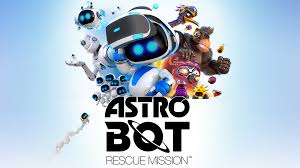
In 2016, the developers behind The Playroom VR created a compilation of experimental multi-player games to showcase the many applications of Sony’s new virtual reality machine. The game received much praise, but one mini-game in particular caught the attention of many fans (including myself). “Robot Rescue” was a simple yet elegant platformer that consisted of a single stage. It wasn’t the most revolutionary platformer by any stretch of the imagination, but the VR implementations made it captivating and the experience was charming nonetheless. The Playroom VR was ultimately a demo-reel, a promise of what could be done with the technology and oh, what little did we know!
Nearly two years later, Astro Bot: Rescue Mission hits the scene and it’s everything I expected it to be and more. At its core, Astro Bot is a traditional 3D platformer not unlike Crash Bandicoot. Stages are relatively linear and aside from the occasional side path or two, each level clearly signposts its starting and end-points. Worlds are themed after classic archetypes, including caves, forests, canyons, graveyards and even lava-filled volcanoes. That’s not to say there aren’t creative levels on display here, however. Exploring the ocean floor, the insides of a whale, a neon-lit space carnival and many more surprises await those who are patient enough to give the game its (much deserved) due time.

While the player controls Astro’s movement (of which he/she can jump, punch and hover), the player’s perspective is that of a hovering robot that follows behind him/her. It’s as if a mother is guiding her child on a new journey. To say the game is on-rails would be grossly misrepresenting the craftsmanship here, as the camera perspective lends itself brilliantly to the stage-design and overall immersion. The VR is implemented in extremely clever ways, too. Whether you’re facing a towering boss with a larger-than-life scale, looking behind you to find a hidden secret in a starting area, leaning forward and peering down a pit to discover a new path, or even headbutting soccer balls with a fellow robot to reach your goal, there are so few unique experiences right now, if any, that can compete. Take the VR implementations away and Astro Bot is still an extremely competent, well-made 3D platformer that almost feels like something Nintendo’s EAD Tokyo would create.
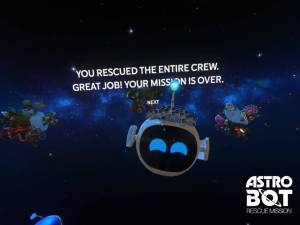
I could go on and on about this game. Astro Bot: Rescue Mission had me grinning from ear to ear from start to finish. It’s one of the few games I felt compelled to 100% complete in 2018, and that says a lot. It’s a wonderful game on its own merits and even a better representation of the hardware’s capabilities. While virtual reality is consumer-ready, it’s still arguably in its infancy. If games like Astro Bot: Rescue Mission are what we have to look forward to in the future, however, then this medium (as far as providing us with new and interesting ways to play video games) is far from growing stale. Congrats to Sony, Japan Studio, Team ASOBI and all those involved!
Favorite Astro Bot: Rescue Mission Moment: Everything. All of it.
Here’s to an even better year for games in 2019!
-Matty
Reblogged this on DDOCentral.
LikeLike
Great list. Nice to see someone else with a few PSVR games on their list
LikeLike
Thank you! Yeah, PSVR really surprised me this year.
LikeLiked by 1 person
Hopefully it can only improve this year
LikeLike